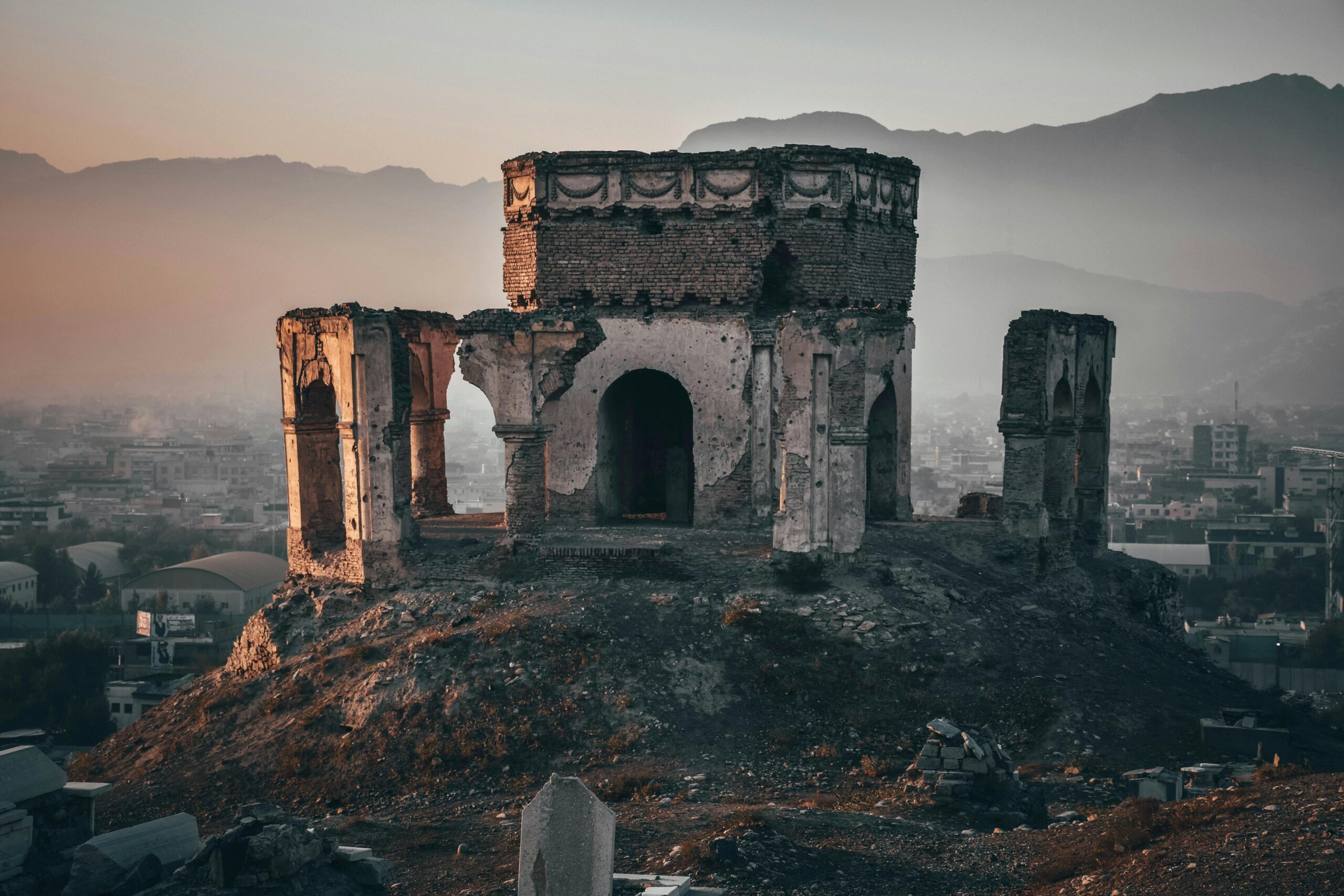Throughout human history, certain places have inspired awe, reverence, and profound spiritual connection. These sacred landscapes form what we call mythic geography—a fascinating intersection of belief, culture, and natural wonder.
🌍 What Is Mythic Geography and Why Does It Matter?
Mythic geography refers to the practice of assigning spiritual, mythological, or sacred significance to physical landscapes. Unlike conventional geography that focuses solely on terrain and coordinates, mythic geography explores how cultures perceive and sanctify specific locations based on religious narratives, ancestral traditions, and collective consciousness.
These sacred spaces become portals between the mundane and the divine, serving as anchors for cultural identity and spiritual practice. From the towering peaks of mountain sanctuaries to the mysterious depths of sacred groves, mythic geography reveals humanity’s eternal quest to find meaning in the landscape around us.
Understanding mythic geography helps us appreciate the deep connections between people and place, revealing patterns of belief that transcend individual cultures. It also offers insights into environmental conservation, as societies that view landscapes as sacred often protect them more diligently than those who see only resources to exploit.
⛰️ Mountains as Cosmic Pillars: Where Earth Meets Heaven
Mountains have consistently occupied privileged positions in mythic geography across civilizations. Their towering presence, reaching toward the sky while rooted in the earth, makes them natural symbols of connection between terrestrial and celestial realms.
Mount Olympus in Greece served as the legendary home of Zeus and the pantheon of Greek gods. The ancient Greeks believed this physical mountain housed divine beings who controlled mortal destinies. Similarly, Mount Kailash in Tibet remains one of the most sacred sites in multiple religious traditions, revered by Hindus, Buddhists, Jains, and Bön practitioners alike.
The Japanese have long venerated Mount Fuji as a sacred peak, incorporating it into Shinto traditions and artistic expressions. Pilgrims continue to climb this volcanic mountain seeking spiritual purification and enlightenment. In the Americas, the Inca considered various Andean peaks as apus—mountain deities that protected communities and controlled weather patterns.
The Universal Architecture of Sacred Mountains
Sacred mountains share common characteristics across cultures. They often feature challenging accessibility, demanding pilgrimage and physical commitment from devotees. This difficulty transforms the journey into a spiritual trial, where the ascent becomes metaphorical as well as literal.
Many sacred mountains also serve as axis mundi—the world axis or cosmic center—in their respective mythologies. This concept suggests that these mountains function as pillars supporting the sky, channels for divine energy, or bridges between different planes of existence.
💧 Rivers of Life: Flowing Through Sacred Geography
If mountains connect earth to heaven vertically, rivers accomplish this horizontally, carving sacred pathways across landscapes. Rivers have nourished civilizations physically and spiritually, becoming repositories of profound mythological significance.
The Ganges River in India represents perhaps the most famous example of sacred hydrology. Hindus believe bathing in the Ganges purifies sins and facilitates spiritual liberation. The river itself is personified as the goddess Ganga, whose descent from heaven to earth is celebrated in elaborate mythology.
The Nile River anchored ancient Egyptian civilization both practically and spiritually. Egyptians associated the Nile with creation, renewal, and the afterlife. Its annual flooding patterns dictated agricultural cycles and became incorporated into religious calendars and mythological narratives.
In Celtic traditions, rivers possessed their own deities and spiritual qualities. The Thames, Severn, and Boyne rivers all featured in myths and ritual practices, with offerings frequently deposited in their waters as gifts to supernatural beings.
Water as Threshold and Transformation
Rivers occupy liminal spaces in mythic geography—boundaries between different worlds or states of being. Many cultures practice river baptisms or purifications, using water as a medium for spiritual transformation and rebirth.
The concept of crossing rivers to reach the afterlife appears in numerous mythologies. The Greek Styx, the Christian Jordan, and the Buddhist Vaitarani all represent transitional waters that souls must navigate during their post-mortem journeys.
🌳 Sacred Groves: Temples Without Walls
Forest sanctuaries and sacred groves represent some of humanity’s oldest places of worship. Before constructed temples, natural woodland areas served as sites for ritual practice, meditation, and divine encounter.
The Druids of Celtic Europe conducted ceremonies in oak groves, believing these natural cathedrals held concentrated spiritual power. Similarly, many African cultures maintain sacred groves as dwelling places of ancestors and spirits, preserving these ecosystems through religious prohibition against exploitation.
In Japan, Shinto shrines are typically located within forested areas, reflecting the religion’s emphasis on kami—spirits residing in natural phenomena. The approach to these shrines through towering trees creates a gradual transition from ordinary space to sacred ground.
India hosts thousands of sacred groves, known as dev vans or sacred forests, protected by local communities through religious customs. These groves preserve biodiversity while serving as living examples of spiritually motivated environmental conservation.
🏛️ Architectural Expressions of Mythic Geography
Human structures built on sacred landscapes often amplify and interpret natural spiritual qualities. Temple complexes, stone circles, and pilgrimage routes transform mythic geography from conceptual belief into tangible experience.
Angkor Wat in Cambodia represents the cosmic mountain Mount Meru, home of Hindu gods. Its architectural design mirrors mythological cosmology, with concentric galleries representing mountain ranges and moats symbolizing cosmic oceans.
Stonehenge and other megalithic structures across Europe demonstrate prehistoric understanding of astronomical cycles and sacred alignment. These monuments mark solstices, equinoxes, and lunar patterns, connecting earthly landscape to celestial mechanics.
The Gothic cathedrals of medieval Europe employed vertical architecture to direct consciousness skyward, using light, height, and sacred geometry to create transcendent experiences within sacred urban geography.
Pilgrimage Routes: Transforming Landscape Through Movement
Pilgrimage routes create linear sacred geography, sanctifying entire pathways rather than single points. The Camino de Santiago across Spain, the Hajj routes to Mecca, and the Shikoku pilgrimage in Japan all transform ordinary landscapes into spiritual journeys.
These routes function as extended rituals, where the act of traveling becomes as spiritually significant as arriving at the destination. Each step reinforces the sacred narrative encoded in the landscape.
🌋 Volcanoes and Islands: Places of Power and Isolation
Volcanic landscapes hold special status in mythic geography due to their dramatic evidence of earth’s raw creative and destructive power. Indigenous Hawaiians regard volcanoes as manifestations of Pele, the goddess of fire and creation, whose lava flows simultaneously destroy and create new land.
Mount Vesuvius, Krakatoa, and countless other volcanic peaks inspired both fear and reverence in surrounding cultures, often interpreted as expressions of divine anger or supernatural activity.
Islands occupy unique positions in mythic geography as isolated worlds unto themselves. Avalon in Arthurian legend, the Greek isles where gods and heroes encountered transformative experiences, and the mystical islands of Celtic mythology all demonstrate how isolation enhances mythological significance.
🌌 Celestial Alignments: When Sky Meets Earth
Sacred landscapes frequently incorporate astronomical alignments, connecting terrestrial geography to celestial patterns. This astronomical dimension adds temporal rhythm to spatial sanctity, creating moments when sacred significance intensifies.
Machu Picchu features the Intihuatana stone, precisely positioned to mark solstices and equinoxes, serving as a ritual calendar and astronomical observatory. Similar alignments appear in Egyptian pyramids, Mayan temples, and Neolithic monuments across Europe.
These alignments demonstrate sophisticated astronomical knowledge and reveal how ancient cultures perceived sacred landscapes as interfaces between earth and cosmos, where divine patterns manifested in stone and shadow.
🗺️ Desert Wildernesses: Encountering the Divine in Emptiness
Deserts occupy paradoxical positions in mythic geography—simultaneously hostile and holy, emptied of conventional life yet full of spiritual potential. The absence of distraction in desert landscapes creates ideal conditions for mystical experience and prophetic revelation.
The Sinai Desert served as the setting for Moses receiving the Ten Commandments, establishing a template where wilderness encounter produces transformative religious insight. Early Christian monastics deliberately sought desert isolation in Egypt and Syria, creating communities dedicated to spiritual development through ascetic practice.
Australian Aboriginal Dreaming tracks crisscross desert landscapes, mapping ancestral journeys and sacred sites across seemingly empty terrain. These songlines encode cultural memory, navigation, and spiritual knowledge within the landscape itself.
The Arabian deserts hold sacred significance in Islamic tradition, particularly surrounding Mecca and Medina. The stark beauty and challenging conditions of desert environments have consistently inspired spiritual contemplation across cultures.
🌊 Oceans and Seas: Mythic Boundaries and Mysterious Depths
Large bodies of water represent ultimate boundaries in mythic geography—edges of the known world concealing mysterious realms beyond. Ancient cartographers marked uncharted waters with warnings of monsters and unknown dangers, projecting fears and fantasies onto liquid expanses.
The Mediterranean Sea featured prominently in Greek, Roman, and Phoenician mythologies as a divine highway traveled by gods and heroes. Poseidon’s oceanic domain held equal importance to Zeus’s celestial realm in the Greek pantheon.
Pacific Island cultures developed sophisticated navigational traditions encoded with spiritual significance. Islands, reefs, and ocean currents possessed mythological identities, transforming vast waters into detailed sacred landscapes knowable through tradition and direct experience.
🔮 Contemporary Relevance of Mythic Geography
Understanding mythic geography offers valuable perspectives for contemporary challenges. As environmental crises intensify, examining how cultures sacralize landscape provides insights into fostering sustainable relationships with natural environments.
Indigenous land rights movements often center on sacred geography, arguing for protection of spiritually significant sites against industrial development. These struggles highlight tensions between economic exploitation and cultural preservation.
Tourism to sacred sites presents complex dynamics, generating revenue while potentially degrading spiritual atmosphere through commercialization. Balancing accessibility with preservation remains an ongoing challenge for communities stewarding sacred landscapes.
Modern spiritual seekers continue creating personal mythic geographies, identifying locations that resonate with individual spiritual journeys. This personalized sacred geography coexists with traditional forms, demonstrating the enduring human need to find meaning in place.
🌟 Mapping Meaning: How Mythic Geography Shapes Identity
Sacred landscapes anchor cultural identity by providing physical locations where collective memory, ancestral connections, and spiritual narratives converge. Displacement from traditional territories often causes profound cultural disruption precisely because it severs connections to mythologically significant geography.
National identities frequently incorporate mythic geography, designating particular landscapes as symbolically representative of the nation’s character. These places become pilgrimage destinations for secular nationalism, demonstrating how mythic geography extends beyond explicitly religious contexts.
Urban environments develop their own mythic geographies, with certain neighborhoods, monuments, or gathering places acquiring symbolic significance that transcends their physical characteristics. Cities become palimpsests of accumulated meaning, layering contemporary significance over historical sacredness.

✨ Experiencing Sacred Landscapes Today
Engaging with mythic geography doesn’t require exotic travel or adherence to specific religious traditions. Local landscapes hold potential for sacred significance when approached with awareness and respect. Natural areas near your home might possess indigenous sacred status or historical spiritual associations worth learning about.
Visiting established sacred sites requires cultural sensitivity and appropriate behavior. Many locations balance welcoming visitors with preserving spiritual atmosphere and local religious practice. Researching customs and expectations before visiting demonstrates respect for living traditions.
Creating personal ritual relationships with specific landscapes—regular visits to particular natural locations for meditation, reflection, or simply quiet presence—develops individual mythic geography connecting personal spirituality to place.
The mysteries of mythic geography continue revealing themselves to those willing to look beyond surface appearances and perceive the layers of meaning cultures have woven into landscapes across millennia. These sacred places remind us that geography is never merely physical—it is always also imaginative, spiritual, and profoundly human. By exploring these landscapes with open minds and respectful hearts, we participate in humanity’s oldest practice: finding the divine reflected in the earth beneath our feet and the horizons beyond our vision.
Toni Santos is a myth-psychology researcher and narrative writer exploring how archetypes, symbols and human story converge to shape mind, culture and meaning. Through his studies on the collective unconscious, comparative mythology and symbolic dream interpretation, Toni examines how the myths we tell reflect the patterns we live — and how awareness of these patterns can spark transformation. Passionate about hero’s journeys, mythic motifs and dream-language, Toni focuses on how story acts as both mirror and map for inner depth and growth. His work highlights the bridges between myth, psyche and culture — guiding readers toward a deeper encounter with themselves and the stories they carry. Blending psychology, mythology and narrative theory, Toni writes about the hidden architecture of meaning — helping readers understand how symbols, stories and dreams shape experience and identity. His work is a tribute to: The power of myth to reveal the unseen structures of psyche The journey from archetype to individual lived story The art of dream-language as a path to wholeness Whether you are a storyteller, psychologist or traveller in the inner landscape, Toni Santos invites you to explore the mythic dimension of mind — one symbol, one myth, one insight at a time.




